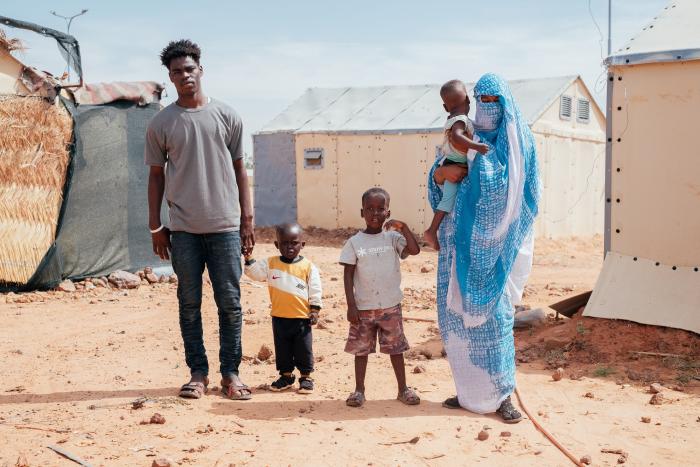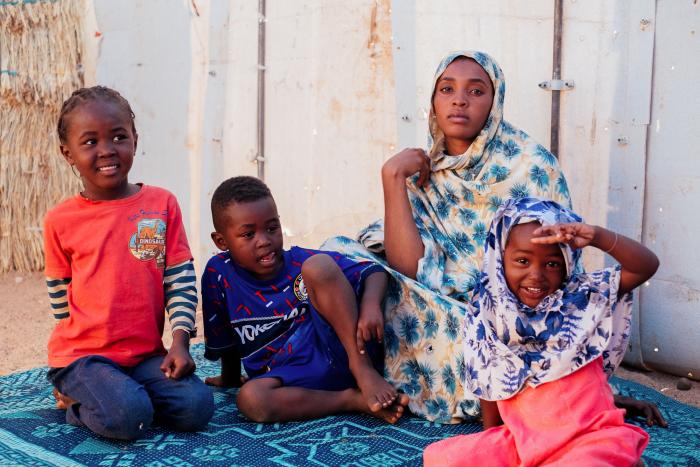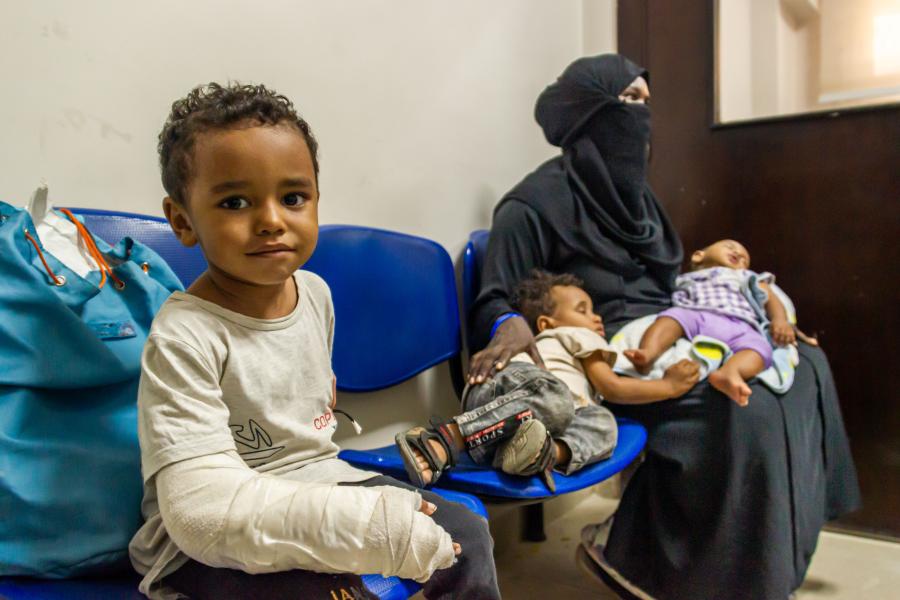Sea Movements 2022 - 2023*
*January - September
|
Route |
Central Mediterranean route |
Western Mediterranean route |
North-west Africa Maritime route |
|||
|
Year 2022 |
Jan-Sep 2023 |
Year 2022 |
Jan-Sep 2023
|
Year 2022 |
Jan-Sep 2023
|
|
|
Departures* |
139,802 |
175,590 |
21,794 |
15,752 |
16,951 |
19,473 |
|
Disembarkations** |
52,299 |
47,061 |
7,581 |
4,389 |
1,269 |
4,268 |
|
Sea arrivals*** |
87,503 |
128,529 |
14,213 |
11,363 |
15,682 |
15,205 |
|
Dead and missing |
1,368 |
2,235 |
259 |
219 |
630 |
421 |
*Departures represent the total arrivals in Europe (Italy, Malta and Spain) and disembarkation in the North and West Africa (Algeria, Egypt, Libya, Mauritania, Morocco, Senegal and Tunisia).
**Disembarkations in North and West Africa (Algeria, Libya, Mauritania, Morocco, Tunisia and Western Sahara).
***Sea arrivals based on data from country of arrival.
Central Mediterranean route: From Algeria, Egypt, Libya and Tunisia to Italy and Malta.
Western Mediterranean route: From Algeria and Morocco to Spain (excluding the Canary Islands).
North-west Africa maritime route: From Senegal, Mauritania, Morocco and Western Sahara to the Canary Islands.
2024 Situation overview
The suffering and loss of life continue unabated for refugees and migrants traveling across Africa or northward toward the Mediterranean. The number of perishing or reported missing at sea alone, some 10,351 individuals since 2020, is a tragedy, with no end in sight. While public attention is focused on sea movements to Italy and Spain, there is less awareness of movements by land from East, Central and West African countries across the Sahara Desert to North Africa and from the Sahel to West African coastal States. Movements across all routes exact a devastating human toll. At least 6,048 people are believed to have died or gone missing while transiting the Sahara Desert to Libya and Algeria since 2014. The figures for deaths at sea and on the land routes are both likely to be severely under-reported.
In 2023, regional displacement patterns did not fundamentally change, but more people were forced to move onwards because of worsening security in the Sahel region and in the East and Horn of Africa, and climate shocks were a contributing factor. The eruption of conflict in Sudan in April 2023 added hugely to already large humanitarian needs and triggered massive internal and cross-border displacement, with 825,000 refugees and 280,000 returnees leaving for neighbouring countries, potentially fueling complex mixed movement flows in the region. Sudan was already a country of departure and transit, with Ethiopians and Eritreans crossing the country towards Libya. The new conflict in Sudan, South Sudan’s economic and sociopolitical situation and Eritrea’s human rights situation make those countries unconducive to returns. At the same time, Sahelian countries witnessed a series of coups, further aggravating the dire political, security and economic situation and spurring mixed movements to North Africa and to coastal States in West Africa.
Many people in need of international protection in sub-Saharan regions moved to Libya in 2023, transiting through countries such as Chad, Egypt, Niger and Sudan. Others arrived in Morocco and Tunisia by land, sea and air. In several countries along the main routes, the presence of non-State armed groups limited the ability of UNHCR and partners to provide protection and assistance. The competent authorities also denied UNHCR and its partners access to some key crossing points. Cross-border and cross-regional criminality, including trafficking in persons, remained serious concerns, while fragile State systems and weak rule of law hindered protection and social stability. A lack of due process and human rights safeguards on asylum and migration management led to refugees and migrants returning in adverse circumstances to some countries of origin.

Collective expulsions without due process or protection safeguards in some States, particularly in North Africa, continued in considerable numbers.
To save lives and ensure access to protection and durable solutions, UNHCR evacuated vulnerable refugees and asylum-seekers from Libya to Niger and Rwanda through the Emergency Transit Mechanisms (ETM).
In addition, negotiations on the Memorandum of Understanding for the resumption of the Humanitarian Corridor to Italy continued and were expected to be finalized by the end of 2023.
From January to September 2023, 179 individuals at heightened risk were evacuated to Niger and 284 to Rwanda. However, as of October 2023, evacuation flights to Niger were still suspended due to the July coup in that country. Resumption depends on the security situation improving, the authorities agreeing to continue with the platform and the engagement of the donor countries to continue with financial support.
For evacuations to the Rwanda ETM, one flight is planned for the last quarter of 2023.
UNHCR will continue to advocate for increased resettlement quotas from the ETMs and expedited resettlement processes to enable solutions to keep pace with evacuations, as well as for increased resettlement places directly from Libya. Further evacuations depend on the number of resettlement departure.
To save lives and ensure access to protection and durable solutions, UNHCR evacuated vulnerable refugees and asylum-seekers from Libya to Niger and Rwanda through the Emergency Transit Mechanisms (ETM). In addition, negotiations on the Memorandum of Understanding for the resumption of the Humanitarian Corridor to Italy continued and were expected to be finalized by the end of 2023.
Situation outlook for 2024
Population movements due to forced displacement and migration in East, West and Central Africa are likely to continue in 2024 at the same pace as 2023 or at an even higher rate. Mixed movements will continue throughout Africa, not just towards the north, but within and between all regions. Only a small part of these movements is expected to be towards Europe, although irregular sea movements from Libya and Tunisia are likely to be at the same level as 2023 or they may increase. Sea movements on the Western Mediterranean and North-west Africa maritime routes may also increase as increasing numbers of asylum-seekers, refugees and migrants arrive in North Africa and a significant number attempting to reach Europe. In parallel, increasing numbers of North African nationals (notably Algerians, Egyptians, Moroccans, and Tunisians) are also expected to attempt this perilous crossing.
Addressing the causes and consequences of these mixed movements depends largely on States committing strongly and more consistently to work together on comprehensive “routes-based” approaches that address the protection and solution needs of refugees and migrants, taking into account the entire spectrum of risks and potential solutions, and States’ capacities to address them.
Saving lives, both at sea and on land, must remain the top priority for all governments.
To better support States addressing mixed movements, UNHCR, in collaboration with IOM, has developed a cross-regional route-based approach that complements and reinforces country-centered action. To implement this, UNHCR will adapt its cross-regional mixed movement strategy to propose and support a comprehensive, targeted and coordinated set of interventions to be taken by States, but also by UNHCR, and other stakeholders, along main routes in countries of origin, transit and destination.
The interventions seek to ensure refugees and migrants find protection, solutions and legal pathways in countries closer to places of origin, reduce human suffering on dangerous journeys, and help States to manage the challenges around irregular movements in line with their international obligations.

A downturn in funding means UNHCR and its partners will be obliged to make difficult choices in prioritizing interventions to save lives, improve protection and access solutions, and could undermine the potential for impact foreseen in an all-of-route, holistic approach.
In 2024, UNHCR in close cooperation with IOM aim to:
-
Strengthen cooperation with States and international organizations for better coordinated search and rescue (SAR) operations both at sea and hopefully on land;
-
Be present at key border, or arrival points along the route for identification of international protection and humanitarian assistance needs;
-
Ensure migrants and refugees receive life-saving assistance upon disembarkation and in border areas;
-
Support to States along the route with asylum capacity development to enhance their ability to increase State-based protection;
-
Work to end the criminalization, obstruction or deterrence of those conducting rescue at sea and providing humanitarian assistance;
-
Promote safe, regular, complementary pathways that meet the needs and uphold the human rights of all refugees and migrants, and support access to pathways through outreach and multipurpose hub;
-
Strengthen the identification, referral and protection for victims of trafficking and unaccompanied and separated children, including with access to justice;
-
Work to addressing drivers by stepped up engagement to improve development programmes, education and skills development as well as safe and fair livelihoods opportunities for youth Engaging with people on the move, through digital and others means, at key points of contact along the route;
-
Take targeted actions to assist states along the routes to improve safe and dignified return, readmission and reintegration of migrants and voluntary repatriation of refugees.
UNHCR continues to advise States and the maritime shipping industry that Libya is not a place of safety for the purpose of disembarkation following rescue at sea. UNHCR will continue facilitating dialogue and collaboration on strengthening rescue at sea with and between coastal States, flag States, SAR NGOs, the International Maritime Organization (IMO) and the International Chamber of Shipping (ICS).

In 2024, UNHCR will maintain strong engagement and support to the AU-EU-UN Tripartite Taskforce on the Situation of Migrants and Refugees in Libya to save and protect lives along the mixed movements routes to, from and inside Libya. The Taskforce will continue to urge the Libyan authorities to end arbitrary detention of migrants and refugees, especially the vulnerable groups of women and children, and promote alternatives to detention. The Taskforce will also support raising awareness on the dangers related to trafficking and smuggling and available protection services along the mixed movement routes.
More broadly, UNHCR will work with regional structures and diplomatic missions on priorities related to the management of mixed movements in the context of the Khartoum and Rabat Processes, under the Joint Valletta Action Plan and the Rome Process.
African States, the African Union and Regional Economic Communities may make modest advances with free movement regimes in Africa, but the gap between policy declaration and implementation will likely persist. Comprehensive action is urgently needed on the part of States to lead humanitarian development-linked responses for the effective management of mixed movements, in order to address the root causes of displacement and improve protection and solutions along the routes.
North Africa
In North Africa, UNHCR will work with national and local authorities and partners to strengthen the protection available for people with international protection needs and enhance their identification and referrals to UNHCR and partners. It will strengthen two-way communication with refugees and asylum-seekers on the move to advise them of risks and how to access protection and assistance. This includes working to ensure better access to services such as health care and education as well as to opportunities to increase self-reliance. UNHCR will keep advocating for increased access to safe and legal pathways, including through resettlement and complementary pathways, to provide viable alternatives to dangerous onward journeys. UNHCR will also further strengthen its partnership with IOM in responding to mixed movements across the region.
West and Central Africa
In West and Central Africa, UNHCR will support national protection and asylum systems, including access to basic services, child protection and responses to gender-based violence. It will work with States and all stakeholders to provide meaningful alternatives to dangerous onward movements in countries of asylum, including Chad, the country that received the largest onward movements of registered refugees in the region in 2022, and then received 425,000 Sudanese refugees in 2023. Along the routes, UNHCR will strengthen community-based identification and referral mechanisms as well as communication with communities. It will also continue its contribution to the inter-agency protection-monitoring Project 21, which covers Burkina Faso, Chad, Mali and Niger and aims to generate joint protection analyses, document needs, gaps and risks, and inform protection programming in areas affected by conflict and forced displacement.
East and Horn of Africa and the Great Lakes
In the East and Horn of Africa and the Great Lakes, UNHCR will strive to preserve and strengthen asylum space and safeguard access to quality registration and asylum procedures and protection in line with international standards, noting that many refugees report delays in registration and refugee status determination procedures as one of the key factors precipitating onward movements. The Office will strengthen movement monitoring and service provision along the routes, with a particular emphasis on children, women, and youth, and will support States to identify and address practical and procedural factors that contribute to onward movement. UNHCR will also strengthen collaboration with Regional Economic Communities, Member States, UN agencies, international organizations and civil society organizations to reinforce protection, save lives and strengthen the response to protection and solutions challenges in mixed movements. UNHCR is supporting the Intergovernmental Authority on Development (IGAD) and East African Community (EAC) with the development of IGAD Common Refugee Management Policies to harmonize refugee protection and assistance frameworks across IGAD and EAC member States. Considering the fractured situation in Sudan, UNHCR will enhance its protection responses for people in onward and mixed movements.
Europe
In Europe, UNHCR will engage with the European Commission, member States and other relevant actors to ensure access to territory and asylum, advocate for greater responsibility-sharing among States and promote the inclusion of refugees and migrants in Europe. The draft EU Pact on Migration and Asylum offers a framework for the improved management of mixed movements, as well as strengthened solidarity and responsibility-sharing mechanisms. This is vital to break years of deadlock on asylum matters in the European Union. UNHCR will advocate for the implementation of the draft Pact, with a particular focus on:
-
ensuring access to territory and addressing human rights violations at borders;
-
developing fair and efficient asylum procedures in Europe and dignified reception conditions;
-
enhancing intra-EU solidarity and responsibility-sharing, and search and rescue;
-
the dignified returns of people who are found not to be in need of international protection;
-
increasing access to complementary pathways, resettlement and family reunification; and
-
promoting effective integration and inclusion.
UNHCR will strengthen collaboration with IOM in line with their Framework of Engagement, as well as with other partners, to enhance data collection and analysis on land and sea movements, and to reinforce communication and advocacy related to protection of refugees and migrants. The two organizations will also engage with national government authorities to facilitate safe, dignified and legal returns for those found not to be in need of international protection or without other grounds for legal stay in receiving countries. Working with partners, UNHCR will continue to analyse the drivers and risks of dangerous journeys and onward movements and will seek access to durable solutions, in line with the Global Compact on Refugees and UNHCR’s “Three year strategy on resettlement and complementary pathways”. Renewed emphasis will be placed on advocacy with national authorities to increase access to resettlement and to explore innovative avenues to complementary pathways. The protection of children and youth against risks associated with irregular movement will be prioritized.
Addressing protection and solutions within mixed movements requires outreach to communities along the routes that combines information-sharing, awareness-raising, and programmatic interventions. As such, local authorities in cities along these key routes will be important partners in UNHCR’s Cities #WithRefugees initiative, a cooperation between United Cites and Local Governments, the Mixed Migration Centre, the International Centre for Migration Policy Development, and other partners.
